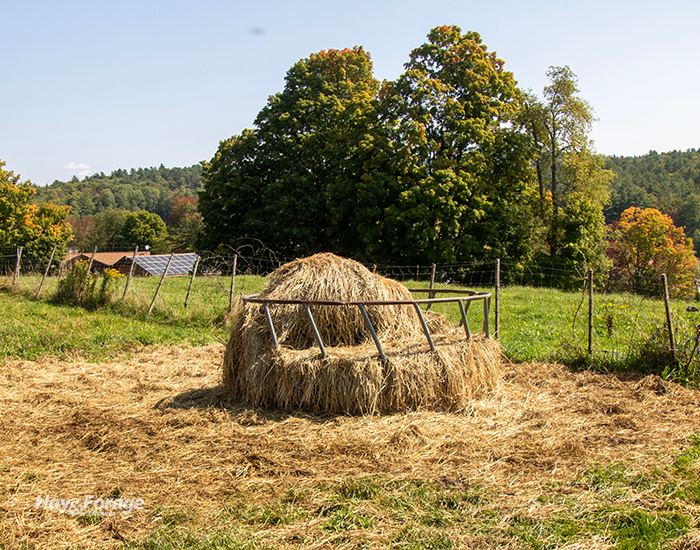
Driving through Midwestern countryside over the holidays, I observed no shortage of sacrifice paddocks with bale feeders surrounded by cattle. More often than not, the feeders were also surrounded by piles of hay that wound up on the ground and got trampled into the mud.
Waste is a necessary evil of winter hay feeding; however, the type of bale feeder that is used can limit just how evil that necessary aspect becomes. In an article from Kansas State University Extension, Emma Briggs says reducing hay waste can significantly improve the efficiency and profitability of cattle operations.
“Some feeders are designed to hold hay securely and keep it clean, while others allow for more spillage and contamination,” the beef production systems specialists states. “By understanding how feeder design influences hay loss, you can make the best choice for your operation and see the benefits in your bottom line.”
Feeder design matters
Although widely used, Briggs says open-bottom feeders can lead to the highest levels of hay waste. Without barriers around the bottom, cattle can easily pull hay from the bale and drop it outside of the feeder. Research shows hay waste can climb up to 21% of the original bale weight, and Briggs notes that much of it occurs within the first 24 hours after bales are placed in open-bottom feeders.
“While open-design feeders may seem convenient, lightweight, or cost-effective upfront, the hay wasted can quickly add up, making them a less economical choice in the long run,” she asserts.
According to Briggs, sheeted-bottom feeders are a step in the right direction. She says a bale feeder with a sheeted bottom extending at least 18 inches from the ground will better contain loose hay and limit the amount cattle can pull out at a time. These types of bale feeders can curb hay waste to around 12% of the original bale weight, reducing waste by about 39% of that from an open-bottom feeder.
Cone or basket feeders, however, are the most efficient options. “These feeders incorporate innovative features that drastically reduce hay waste, such as suspending the bale or restricting access to the top third of the bale,” Briggs writes. “By keeping the hay centrally located and contained, these designs make it harder for cattle to waste hay by pulling it outside the feeder.”
Compared to open-bottom feeders, research shows cone or basket feeders can mitigate hay waste by up to 73%. Further, reported hay losses in these types of feeders have been as low as 2% to 5%. In those cases, Briggs says the cone/basket feeders also included a sheeted bottom, which saved even more hay from being wasted after bales collapsed.
Unrolling another option
In addition to bale feeder design, there are other factors of hay feeding that lend themselves to less waste. For one, testing hay and knowing its nutritional values will inform more precise feeding practices and help to avoid overfeeding. Limit-feeding hay by restricting access to it for part of the day can also be an effective way to prevent waste.
Briggs adds that unrolling hay instead of using bale feeders is another solution. In this case, unroll only the amount of hay that the herd will consume within 12 to 24 hours. After that point, hay waste can surge — possibly exceeding 25% of the original bale weight — as cattle stop eating the hay and start using it as bedding.

